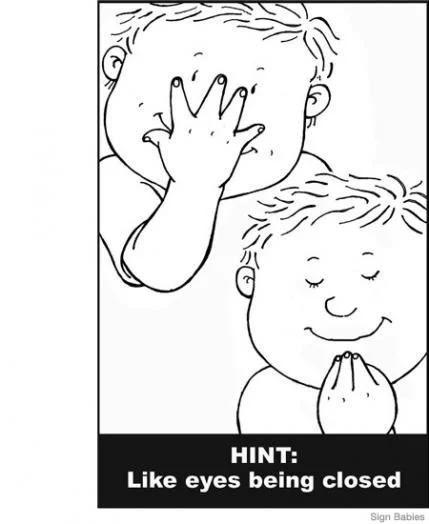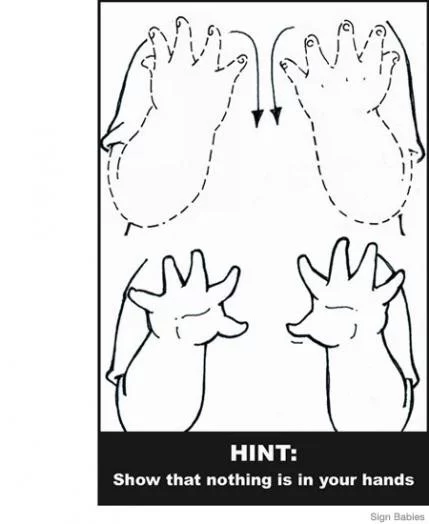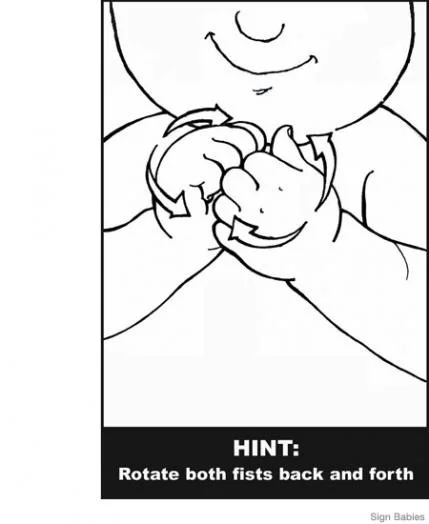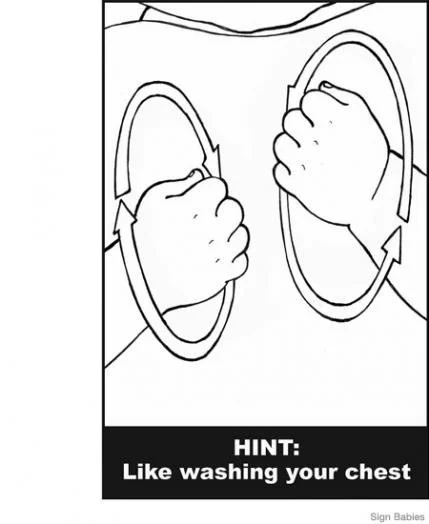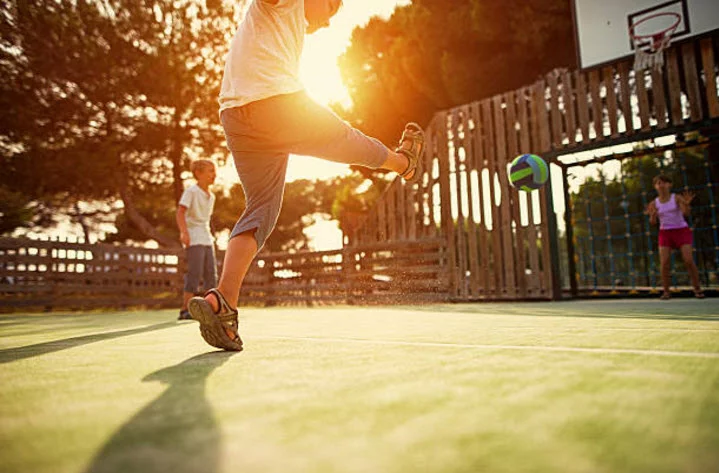Inspired by: www.parenting.com
Teaching infants to speak can be a slow, arduous process. Studies show, however, that babies are able to learn how to sign much earlier than they can speak. In fact, babies are shown to be developmentally ready for signing at 4 months of age. Who doesn’t want to not only give their little one a head start, but also help develop and strengthen a crucial component of their brain?
Open up the lines of communication with your infant with signs for “more”, “done”, “eat”, “change” and other signs for everyday items!
According to Nancy Cadjan, President of signbabies.com, a line of books, seminars, DVDs, games and flash cards that advocate baby sign language, babies are developmentally ready for their parents to start signing to them after 4 months old, but won’t be able to sign back until 7-9 months, when they have better coordination.
This sign will help babies transition from one activity to the next. It also helps Mommy explain that something is all gone.
Signing to baby that it’s time to sleep is a good way to start the bedtime routine. Even better: whenshe lets you know she’s tired by using the sign.
This sign comes into handy when babies are teething and want to tell you they want medicine to ease their pain.
Stay consistent with your signs. Use them frequently—every time you engage in the activity or say the word. When you’re eating, use the “eat” sign and say, “We’re going to EAT. Do you want to EAT? Let’s EAT another bite of cereal.”
When signing, remember that context is important. Sign “milk” while feeding your baby a bottle or while nursing—not when you’re doing other things.
“Change” is an important sign because it gives your baby a heads up that you’re transitioning from play to diapering—something he probably won’t want to do. Signing “change” will help them understand the toy break is temporary. When you’re done, sign “done” and say, “We are DONE,” so that your baby knows changing time is over. According to Cadjan, many parents report that when they use the “change” and “done” signs, the struggle of diaper time goes away.
Should you step in to help, or let baby figure things out on his own? This will let him communicate when he needs your aid—or that he wants to help you.
Teach your baby words he’ll be able to practice often, like “bath,” since you do it every day.
Don’t worry about teaching all the signs at once; just choose a few to start. When you think your baby is getting the hang of it and signing back, you can slowly add more signs to his repertoire.
Teaching your baby signs for foods can help you get an idea of his favorites. “Banana,” a common first food, is a good one to try.
Don’t expect the signs to look perfect. Babies might do the signs a bit differently, since their fine motor skills are not as advanced as yours are. If you think your baby is trying to sign something, help her out. Say, “Oh! Are you signing WATER? Do you want some WATER?” and continue to make the sign correctly
Foster an early love of reading with the simple sign for “book.”
Maintain eye contact whenever you sign to make sure your baby sees your hands clearly. This is key to helping her make the connection between the sign and the word.
Be patient—and don’t pay compare your baby to the champion signer at music class. It takes some babies longer than others to have the dexterity to sign, but keep at it.
Some babies will grunt or pant when their parents sign, others will laugh or smile—all are indications that your baby is receptive to your communication. Also, don’t set aside time to sign, just incorporate it into your day, keeping it simple and fun.
Here’s a sign that teaches communication skills and manners. You’re welcome!
Baby sign language proponents say that signs not only help your child communicate with your earlier and more easily, it also helps them speak sooner too.
What to help give your little one a head start? Download these free baby sign language flash cards.
Along with teaching your baby how to communicate, don’t forget to teach them the basics of safety! With your own McGruff Safe Kit, you can do that in a fun, kid-friendly way while also preparing for the future. Request your today!
REQUEST A KIT



